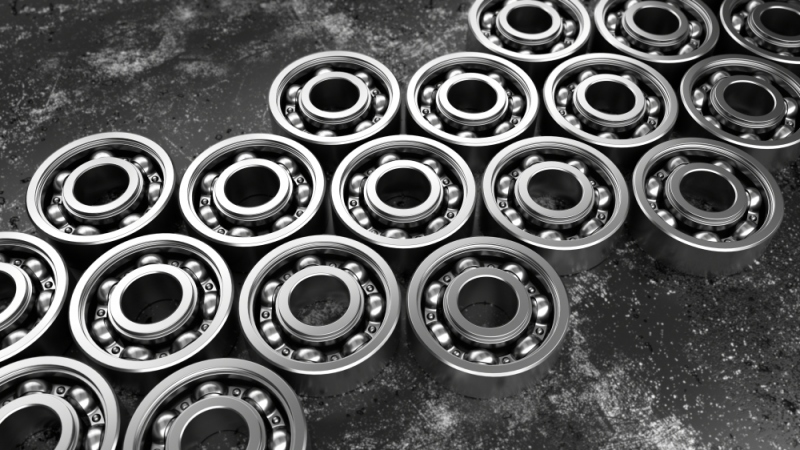When embarking on a new project, it is important to understand what type of tools and equipment you need. Mechanical systems require bearings to reduce friction. Friction causes wear and tear and can degrade metal over time, but bearings reduce the amount of friction by allowing the two surfaces to roll over each other. A smooth metal ball or roller rolls against a smooth inner and outer surface, allowing it to spin. The bearings take the load and the metal is protected from unnecessary degradation. There are different types of bearings, and it is important to know which one is required for your particular project. Here are a few examples of different bearings you might utilize.
- Ball Bearings: The most common type of bearing, ball bearings can take both radial and thrust loads. They are generally used for small load applications. Ball bearings rotate smoothly because they only contact the inner and outer race at a very small point. However, because the contact point is so small, ball bearings can quickly become overloaded and become deformed.
- Roller Bearings: Roller bearings are cylinder shaped where the point of contact between the bearing and the race is a line rather than a point. This means the load is more widely distributed, and stainless steel roller bearingscan handle a much greater radial load and a higher speed. They are not equipped to handle much thrust load.
- Tapered Roller Bearings: Tapered roller bearings are designed to distribute both radial and thrust loads evenly, such as in car hubs. The axes between the roller and bearing are tapered, and the more angled the bearing the greater the load.
- ThrustBearings: Thrust bearings are specifically made to handle thrust loads in low-speed and low-weight applications, and so offer little to no radial load capacity. There are both roller and ball thrust bearings.
- Needle Roller Bearings: Needle roller bearings are often used at low speeds in machinery with restrictive space considerations. They use small cylindrical rollers with small diameters and so are difficult to guide. They also tend to produce a great deal of friction.
Different types of bearings can offer different types of load. It is important to conduct research and choose the right bearing for your particular project. Bearings can greatly reduce the amount of friction within metal mechanical systems, and the right bearing can allow your machinery to run smoothly and efficiently without the costly deterioration of worn metal.



